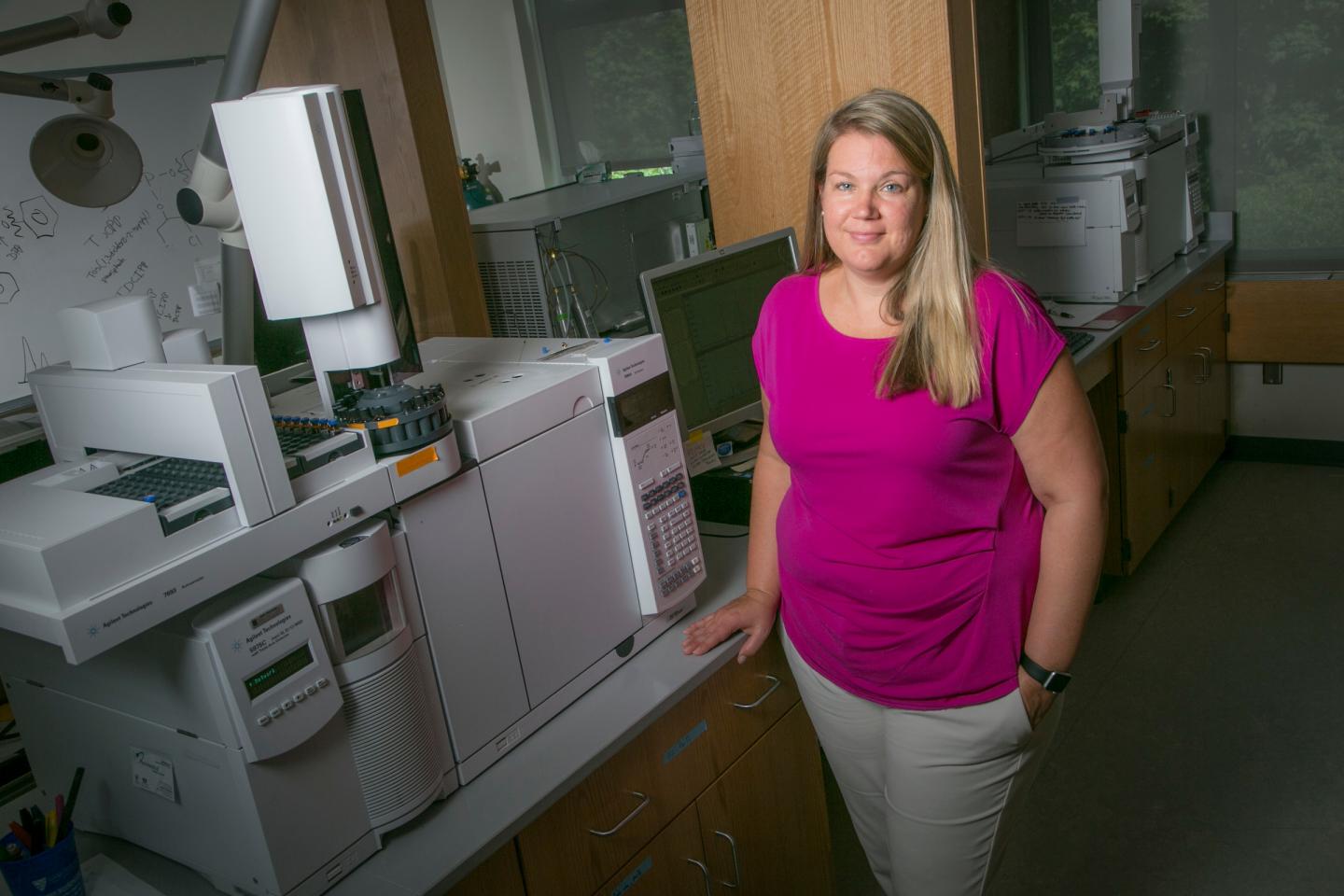
IMAGE: Environmental Chemist Heather led a three-year study of in-home exposures to semi-volatile organic compounds (SVOCs) among 203 children from 190 families. view more
Credit: Duke Photo
DURHAM, N.C. — Children living in homes with all vinyl flooring or flame-retardant chemicals in the sofa have significantly higher concentrations of potentially harmful semi-volatile organic compounds (SVOCs) in their blood or urine than children from homes where these materials are not present, according to a new Duke University-led study.
The researchers presented their findings Sunday, Feb. 17 at the annual meeting of the American Association for the Advancement of Science in Washington, D.C.
They found that children living in homes where the sofa in the main living area contained flame-retardant polybrominated diphenyl ethers (PBDEs) in its foam had a six-fold higher concentration of PBDEs in their blood serum.
Exposure to PBDEs has been linked in laboratory tests to neurodevelopmental delays, obesity, endocrine and thyroid disruption, cancer and other diseases.
Children from homes that had vinyl flooring in all areas were found to have concentrations of benzyl butyl phthalate metabolite in their urine that were 15 times higher than those in children living with no vinyl flooring.
Benzyl butyl phthalate has been linked to respiratory disorders, skin irritations, multiple myeolma and reproductive disorders.
“SVOCs are widely used in electronics, furniture and building materials and can be detected in nearly all indoor environments,” said Heather Stapleton, an environmental chemist at Duke’s Nicholas School of the Environment, who led the research. “Human exposure to them is widespread, particularly for young children who spend most of their time indoors and have greater exposure to chemicals found in household dust.”
“Nonetheless, there has been little research on the relative contribution of specific products and materials to children’s overall exposure to SVOCs,” she noted.
To address that gap, in 2014 Stapleton and colleagues from Duke, the Centers for Disease Control & Prevention, and Boston University began a three-year study of in-home exposures to SVOCs among 203 children from 190 families.
“Our primary goal was to investigate links between specific products and children’s exposures, and to determine how the exposure happened — was it through breathing, skin contact or inadvertent dust inhalation,” Stapleton said.
To that end, the team analyzed samples of indoor air, indoor dust and foam collected from furniture in each of the children’s homes, along with a handwipe sample, urine and blood from each child.
“We quantified 44 biomarkers of exposure to phthalates, organophosphate esters, brominated flame retardants, parabens, phenols, antibacterial agents and perfluoroalkyl and polyfluoroalkyl substances (PFAS),” Stapleton said.
Stapleton presented her team’s findings at AAAS as part of the scientific session, “Homes at the Center of Chemical Exposure: Uniting Chemists, Engineers and Health Scientists.”
She conducted the study with Kate Hoffman, assistant research professor in environmental sciences and policy; research assistant Emina Hodzic; and PhD students Jessica Levasseur, Stephanie Hammel and Allison Phillips, all of Duke.
###
Other members of the research team were Xiaoyun Ye, Antonia M. Calafat and Andreas Sjodin of the Centers for Disease Control & Prevention, and Thomas F. Webster of Boston University’s School of Public Health.
Stapleton is the Dan and Bunny Gabel Associate Professor of Environmental Health at Duke’s Nicholas School.
CITATION: “Children’s Exposure to Chemicals Emitted from the Home Environment,” Heather M. Stapleton, Kate Hoffman, Jessica Levasseur, Emina Hodzic, Allison Phillips, Xiaoyun Ye, Antonia M. Calafat, Andreas Sjodin and Thomas F. Webster. Presented at AAAS Annual Meeting, Feb. 17, 2019.
Disclaimer: AAAS and EurekAlert! are not responsible for the accuracy of news releases posted to EurekAlert! by contributing institutions or for the use of any information through the EurekAlert system.

